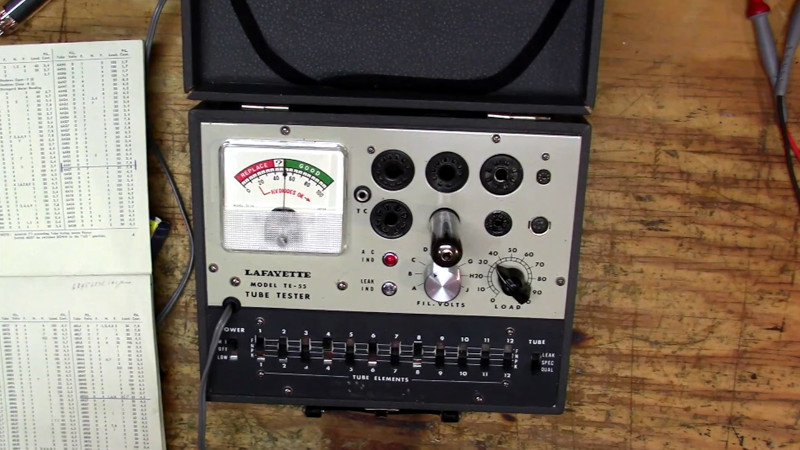There’s still a mystique around vacuum tubes long after they were rendered obsolete by solid state devices, and many continue to experiment with them. They can be bought new, but most of us still come to them through the countless old tubes that still litter our junk boxes. But how to know whether your find is any good? [Rob’s Fixit Shop] took a look at a tube tester, once a fairly ubiquitous item, but now a rare sight.
To look at it’s a box with an array of tube sockets, a meter, and a set of switches to set the pinout for the tube under test. We expected it to use a common-cathode circuit, but instead it measures leakage between the grid and the other electrodes, a measure of how good the vacuum in the device is. In a worrying turn this instrument can deliver an electric shock, something he traces to a faulty indicator light leading to the chassis. We are however still inclined to see it as anything but safe, because the lack of mains isolation still exposes the grid to unwary fingers.
All in all though it’s an interesting introduction to an unusual instrument, and given a suitable isolating transformer we wouldn’t mind the chance to have one ourselves. If you need to test a tube and don’t have one of these, don’t worry. It’s possible to roll your own.
















I’m so old I remember the public ones, with the racks of new tubes underneath if your tube tested bad.
http://travelphotobase.com/i/USOK/OKCH66.JPG
My corner candy store had 1 and I would immediately go play with it, then on to the comics…
Very cool :)
I don’t recall seeing one with a row of toggle switches for each pin before.
All of the testers I used either had an array of switches like this one, or a few rotary switches. They had booklets, in which you would reference your tube number and it would tell you which position all of the switches should be in and which socket to use for testing that particular type of tube.
The electrons come off of the plate?
He has his arrow the wrong way for electrons, the current flows from B+ to ground. The electrons move the other way. They came up with the direction of current, before we even knew about electrons. So they flipped a coin and it came out the wrong way.
The good ones measure the Dynamic Mutual Trans Conductance. This one and the drug store ones only test emissions
As a kid, I would get up early on bulk trash pickup day and roam the neighborhood for TVs and radios as my main source of spare tubes. Evey so often I would take a bucket of tubes into the local drugstore and run them through their be console tube tester
I have several tube testers in my collection – a “drug store” large one for use by the public, an unbuilt EMC kit, and a Heathkit TC-2 that is my workhorse. I use the TC-2 to test all the tubes in my vintage radios to make sure they are still good.
Audio equipment tubes have a higher quality that must be met so they are matched between channels. That is where the Dynamic Mutual Trans Conductance testers come into play. They are good for tracing the tubes curves and ensuring a good match. Nothing better than the warm sound emitted by a web-based stereo system!
Lol. Fat fingers. Tube-based stereo!
The B+K Dyna Jet 747 tube tester was one of the last premium suit case tube testers, and it used solid state electronics…ironic.
Ebay has one for $200.00 with manuals and will test even those rare hard to find tubes.
End of an era…
Looks a lot like a miniaturized or pared-down EiCo 667. Neat!